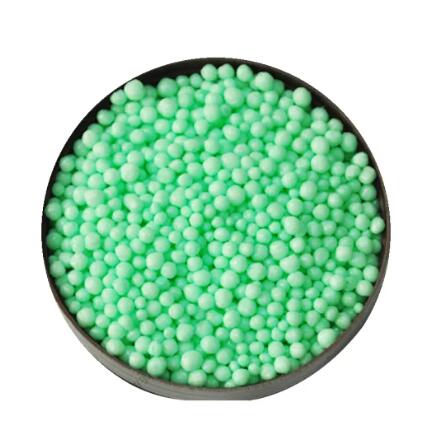Using controlled-release fertilizer (CRF) is a smart and efficient way to provide long-term nutrition to your plants. CRF, also known as slow-release fertilizer, gradually releases nutrients over an extended period. This approach offers several advantages, including reduced labor, less risk of over-fertilization, and improved plant health. Here's how to use controlled-release fertilizer effectively:
Choose the Right CRF: The first step is selecting the appropriate CRF for your specific plants and soil conditions. CRFs come in various formulations, and the nutrient content can vary. Read the label carefully to ensure it matches the requirements of your plants.
Calculate the Application Rate: Determine the recommended application rate for the CRF you've chosen. This is typically provided on the product packaging and is based on the type of plants, their size, and the area you wish to fertilize.
Prep the Planting Area: Before applying the CRF, prepare the planting area. This includes removing any weeds, debris, or competing vegetation. If you are using CRF for established plants, ensure the soil is moist.
Distribute Evenly: Even distribution is crucial to ensure that the nutrients are released uniformly to all the plants. For individual plants, make small holes in the soil around the root zone, following the recommended spacing. For larger areas, use a spreader for even coverage.

Apply at the Right Time: The timing of CRF application is important. It's usually best to apply CRF at the beginning of the growing season when the plants are actively growing and can take up the nutrients. Avoid applying during the dormant season or extreme weather conditions.
Water In: After applying CRF, water the area thoroughly. This helps activate the slow-release process and ensures that the nutrients start moving into the root zone. Watering also reduces the risk of nutrient burn and leaching.
Monitor and Adjust: Over time, monitor your plants' growth and health. Controlled-release fertilizers are designed to provide nutrients for several months, so you won't need to reapply frequently. However, you may need to adjust the application rate or frequency if you notice signs of nutrient deficiency or excess.
Follow Recommendations: Always follow the Fertilizer manufacturer's recommendations for the specific CRF you are using. This includes any guidelines for reapplication or additional fertilization. Different CRFs have varying release rates, so it's essential to adhere to these guidelines.
Protect the Environment: Be mindful of potential environmental impacts. Controlled-release fertilizers, when used correctly, reduce nutrient runoff and leaching. However, if overapplied, they can still contribute to water pollution. Follow best practices for fertilization to minimize these risks.
Storage: Store any unused CRF in a cool, dry place and keep it in its original packaging to prevent moisture from affecting its quality.
Controlled-release fertilizers are a valuable tool for promoting plant health and reducing the need for frequent fertilization. By selecting the right type of CRF, applying it correctly, and monitoring your plants, you can enjoy the benefits of slow, steady nutrient release and healthier, more vigorous growth in your garden.



Comments
Please Join Us to post.
0